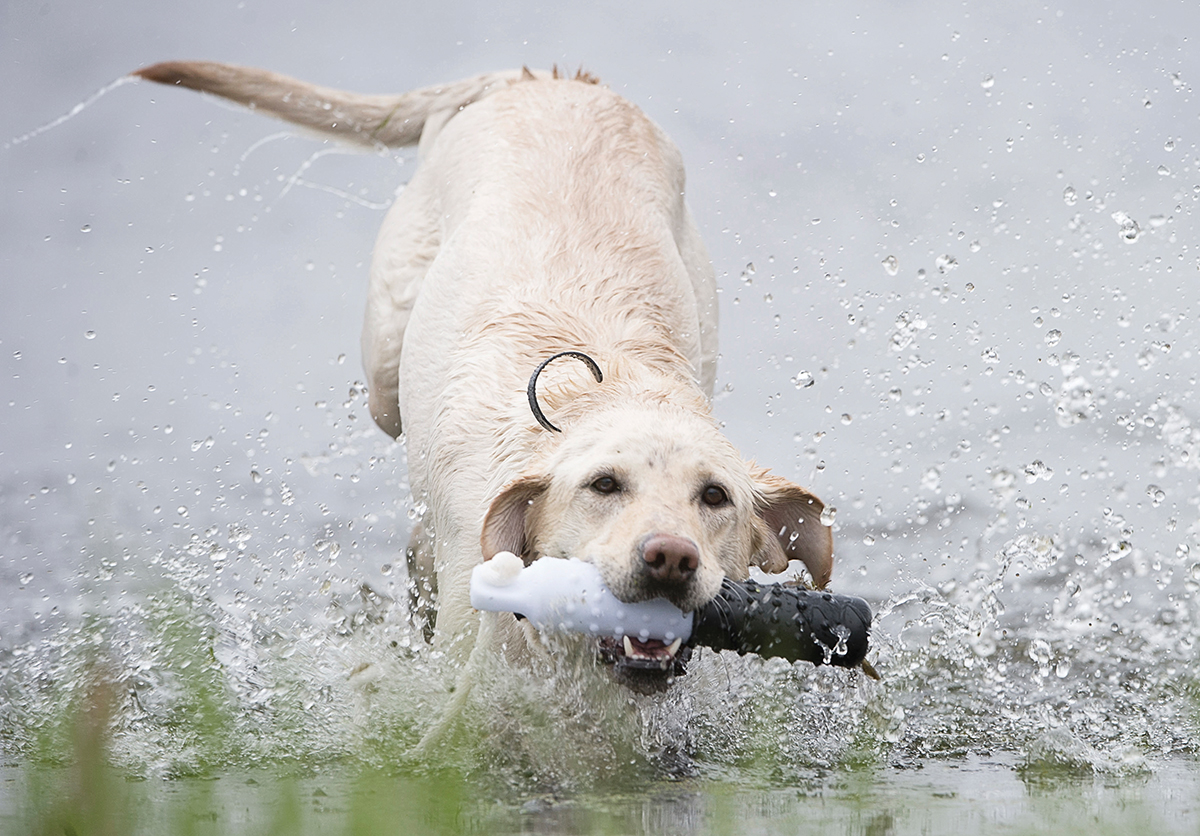
Sep 1, 2021
Canine Corner: The right way to introduce your retriever to water
By Charlie Jurney
Photos by Lee Thomas Kjos of Kjos Outdoors Presented by SportDOG® Brand
(Originally published in the Fall 2021 issue of California Waterfowl)
Your dog's level of enthusiasm for water will be heavily influenced by its first encounter with it.
Even though the majority of sporting dogs seem to love swimming almost more than eating, you should keep in mind that the enthusiasm level your retriever exhibits for water will be heavily influenced by its first encounter with it. Let’s go over some points to keep in mind when it’s time to put the water into “water dog."
1. Start as early as conditions allow. You can introduce a retriever pup to water at a very young age, provided weather conditions are right. I just about lose my mind when someone brings me a 6- or 7-month-old pup for training and tells me the dog has never been in the water. It’s not that such a dog is a lost cause, and if you’re in that situation, there’s no need to panic. But understand that a pup that has developed confidence in and around water at, say, two or three months old is going to be way ahead in its training progress.
California retriever owners have an advantage over their counterparts in northern climates when it comes to ideal retriever training weather: more sunshine and more warmth. If the water temperature is warm enough that you can comfortably wade in it while barefoot, then it’s surely puppy-ready.
2. Keep it shallow, keep it fun. Take care to find a pond that’s shallow around the edges, with a bottom that drops off gradually. This is really important. Too many dogs have been introduced to water at the end of a dock or by getting tossed from a boat. Do that with your pup and yes, it will swim. But will it like it? Um, not so much.
Get near the edge of your shallow pond and toss some fun bumpers on land, right next to the water. If your pup is pumped up and having a good time with that, the next step is to toss the bumper just a couple feet into the water. The bumper should land where your dog has to enter the water to grab it, but its feet can still touch bottom. I call this “lunging” water. It’s shallow enough that your pup can jump around and run through it, and most pups will find this to be a whole lot of fun.
Gauge your pup’s reaction to that first bumper toss or two. Timid and skeptical? Or bonkers and asking for more? If there’s any indication that your pup isn’t enjoying this, stay in the lunging water phase for the rest of the session and the next. But if all is going well, you can go to the next step.
3. Time to actually swim. For a dog that is loving the water and is fixated on retrieving, the initial toss of a bumper into a little bit deeper water can seem almost anti-climactic. For some dogs, it seems to barely register to them that their feet are no longer touching bottom. Others might hesitate for a moment, but then that drive to retrieve takes over and they just do what comes naturally.
Regardless of your dog’s intensity level, remember to really pour on the praise each time your dog comes back. Don’t get hung up on whether your pup is delivering perfectly to hand (unlikely) or whether it drops the bumper to shake off when it gets out of the water (likely). You’ll be working on those things later.
Keep up the fun bumper routine for a few more sessions. One on land, one in the water. One on land, two in the water, and so on. Vary the distances, but resist the urge to fling a throw as far as you can “just to check” on how far your dog will swim.
4. If things aren’t going too well … So far I’ve outlined a pretty nice scenario and, frankly, if your dog comes from good breeding and you’ve done your part, chances are your pup’s introduction to water will go just like that. But sometimes, for some unknown reason, a pup is just not taking to water. You can solve for this; it just takes some patience.
When I get a dog in for training that has shown plenty of enthusiasm on land but balks at getting into the water, it’s typically one that missed out on a good water introduction as a puppy, or at some point in its young life it had a bad experience with water.
In such a case, I snap a 25-foot check cord to the dog’s collar, put on my waders, and walk into the shallow pond. I call the dog to me, and if it resists, I literally pull him in with me. Note that at this point I’m standing in that earlier-mentioned “lunging” water. Once the dog is in there with me, we can walk around the edges, and I’m hoping the dog is learning that maybe this isn’t so bad.
Depending on my tough customer’s attitude, I gradually wade a little deeper while I coax it to come with me. This might take a few sessions, but that’s OK. My hope is that eventually I can be standing in waist-high water while the dog is moving along with me and learning to swim like a champ.
Successfully introducing your retriever to water, like so much of its training, requires you to think strategically and exercise patience. If you do your part, it’s highly probable your dog will exceed your expectations.


